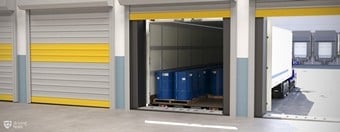

All your missed questions are saved
automatically for extra practice.




It's a practice test that's automatically made up of all your missed questions. Once you finish this test, you’ll be able to revisit your Challenge Bank™ to practice and sharpen your skills.
View All PlansAdding difficult questions to Challenge Bank™ is an exclusive Premium feature. Unlock access to 650+ exam-like questions, a Pass Guarantee, personalized study plans, and more.
View All PlansFree New Jersey CDL HazMat Endorsement Practice Test 2025
| 90-100 | => | 26% |
| 80-89 | => | 22% |
| 70-79 | => | 26% |
| 60-69 | => | 13% |
| <60% | => | 13% |
Whether driving through the Appalachian Mountains (especially the challenging Kittatinny Ridge), the forested Pine Barrens in the south, the coastal plains, or the urban congestion of Newark and Jersey City, New Jersey is a diverse state with much to offer. If adding the Hazardous Materials (Hazmat) endorsement to your Commercial Driver’s License (CDL) is your objective, you’ve come to the right place. The Hazmat endorsement increases your marketability and recruitment potential and can result in higher pay! Enough said? Let’s take a closer look.
The U.S. government has judged certain materials as hazardous, and the Hazmat endorsement permits drivers to legally transport these materials. Hazardous materials transported in the Garden State include petroleum products (gasoline and diesel fuel), industrial chemicals (chlorine and sulfuric acid), propane and other compressed gasses, medical waste and other biohazards, and agricultural chemicals (fertilizers and pesticides). There are many high-level organizations in New Jersey that require the endorsement, including ExxonMobil (located in Bayonne), Merck & Co. (headquartered in Kenilworth), Linde Gas North America (Bridgewater), BASF Corporation (Florham Park), and PSEG (Public Service Enterprise Group) (Newark).


Reviewed for legal and handbook accuracy
M.S., Chief Educational Researcher (ACES member)
Last verified for accuracy on
Real New Jersey drivers who passed first try
Verified student reviews • Shared with permission
About the New Jersey CDL
Because of the increased responsibility and need to maintain public safety (and yours!), many additional requirements are necessary to add the endorsement. First, you’ll need to pass a Transportation Security Administration (TSA) fingerprinting and background check. Results from TSA can take weeks to arrive. Strategically use that time to study and practice for the second hurdle: the MVC knowledge test. The multiple-choice knowledge test addresses federal regulations, substance handling, material packaging, quantity limits, and transport configurations for hazardous materials. You’ll need a score of 80% on New Jersey’s knowledge test, which is made up of 30 questions (New Jersey CDL Handbook 2025).
If all this sounds overwhelming, check out what we’ve done to streamline the process for you. Our online practice tests are designed to avoid the fluff of extra information you’d find searching online. We designed our New Jersey MVC Hazmat Endorsement practice tests to mimic what you will face on the official MVC test. We’ve also researched information retention and designed the tests to respond immediately. If you miss a question, our automated assistant will provide reasons for another choice as the answer. Once you feel prepared and have your TSA results in hand, you’ll visit the MVC with the necessary documents, pay the fees, and pass the test.
More NJ CDL test resources
Are you in another state?
- Alabama
- Alaska
- Arizona
- Arkansas
- California
- Colorado
- Connecticut
- Delaware
- District of Columbia
- Florida
- Georgia
- Hawaii
- Idaho
- Illinois
- Indiana
- Iowa
- Kansas
- Kentucky
- Louisiana
- Maine
- Maryland
- Massachusetts
- Michigan
- Minnesota
- Mississippi
- Missouri
- Montana
- Nebraska
- Nevada
- New Hampshire
- New Jersey
- New Mexico
- New York
- North Carolina
- North Dakota
- Ohio
- Oklahoma
- Oregon
- Pennsylvania
- Rhode Island
- South Carolina
- South Dakota
- Tennessee
- Texas
- Utah
- Vermont
- Virginia
- Washington
- West Virginia
- Wisconsin
- Wyoming
We know what it takes to pass. And we’ve got the proof.
Driver’s Ed is - nobody wants to set foot inside the MVC. That’s why millions of learners trust us for simple, visual, effective prep.
An official & trusted partner in driver education
We are an officially recognized FMCSA Entry-Level Driver Training provider and a proud partner to over 2,500 libraries. We work with safety organizations like GHSA and the National Safety Council to help create safer roads for everyone.






A smarter way to study
Challenge Bank™
Our trademarked system automatically saves questions you miss, creating personalized tests that target your weak spots until you’ve mastered the material.
AI-powered feedback
Get smarter as you study. Our new AI-powered feedback provides detailed, question-level insights to help you understand the why behind each answer.
Interactive handbook
Go beyond the boring black-and-white manual. Our interactive handbook lets you read, listen with an MP3 audio version, or even chat with it to find the information you need, faster.
We build our practice questions from the current 2025 NJ Driver Handbook and refine them using patterns recent test‑takers report.
Driver handbook • Knowledge‑test/permit overview • Fees & ID requirements • Office/appointment info
We mirror recurring themes (e.g., right‑of‑way traps, sign look‑alikes) and use similar distractors and wording styles.
We don’t collect or publish actual test items and we’re not affiliated with MVC.

